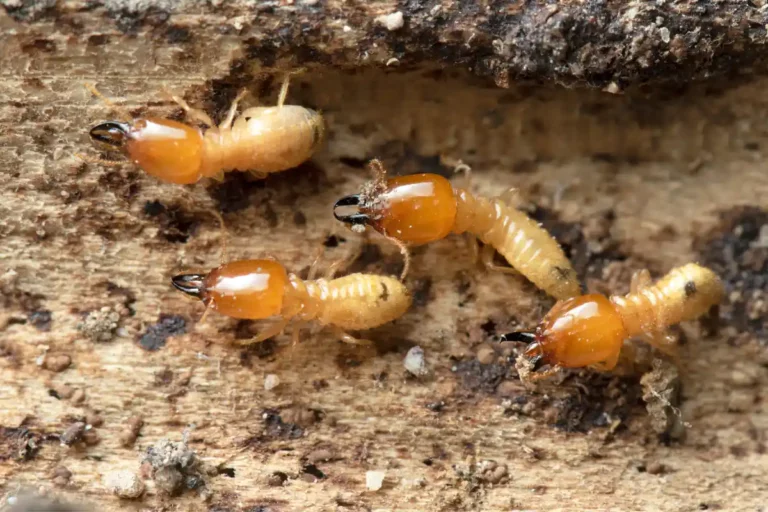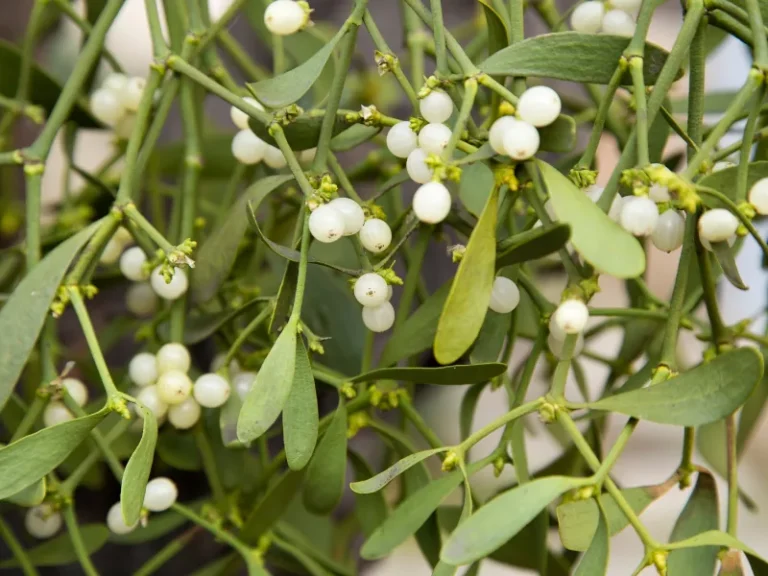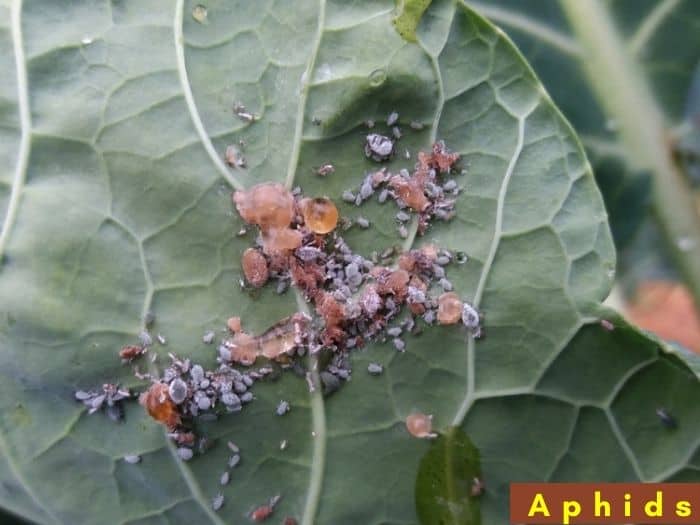How to Identify and Get Rid of Black Aphids
Ever heard of an insect that can lay eggs, give live birth, and reproduce both asexually and sexually to make babies? That’s the incredible black bean aphid! If you spot small black insects on your plants, you’re likely looking at black bean aphids. They may be small, but black aphids pack a powerful pest punch.

The ability of black aphids to multiply so fast if left uncontrolled can lead to a feeding frenzy on plants, leaving them stunted, curled, and covered in an unsightly black substance called honeydew.
I’m a master gardener, and recently, I walked through my garden and spotted a number of bean plants with colonies of black aphids. I took a lot of footage to show you, as you will see below. In this article, I’ll guide you on how to identify and control black aphids.
What are black aphids?
Black aphids are small, soft-bodied insects that feed on plant sap. The black bean aphid (Aphis fabae) is a black, soft-bodied species about 1.8–2.4 mm long.[1] It forms dense colonies on the leaves and shoots of many crops and ornamental plants.
It has complex lifecycles involving winter egg-laying on woody shrubs, spring livebearing, and summer migration to various herbaceous host plants. This makes it so difficult to control as its population explodes within a very short time.
Black aphids go by various names, so don’t be confused when you hear other names including black bean aphids, black cherry aphids, black willow aphids, black fly aphids, black-winged aphids, and black citrus aphids.
Identification
Black aphids have soft, pear-shaped bodies reaching 1.8 – 2.4mm long. A key identifying feature of the black bean aphid is their darker hue compared to green aphids and wooly aphids, which have a powdery white appearance.
Upon close inspection, black bean aphids have black heads and legs with pale yellowish segments. Their cornicles (tailpipe-like appendages) are elongated and brown-black.
I found these cornicles hardest to see even in the close-ups, but they are there. 😀
The wings of mature winged adults are shiny and are constantly held angled over their bodies at rest.
See the close-up photos below. Swipe to see the whole gallery. I tried to zoom in as much as possible so you could see and identify the black aphid.
Here’s a short video for further reference. I isolated a single black aphid and zoomed in with my phone as much as possible.
[SHORT VIDEO]
NOTE: The dark coloration of black aphids helps distinguish them from other species. However, identification at the species level requires thorough examination under high magnification using specialized equipment. If you’re interested in fine details that distinguish different types of aphids with close-ups, I recommend this article by the University of Wisconsin Horticulture Division of Extension.
Origin and Distribution
The black bean aphid is native to Europe and Asia but has now spread to become cosmopolitan in distribution. It is now found throughout temperate regions of North America, Western Europe, Asia, Africa, and South America.
The species has been introduced and established on all continents except Antarctica.
As a migratory insect, the black aphid has high dispersal ability and has expanded its range through human transport and trade. Its wide distribution worldwide makes it an invasive species of agricultural and ecological concern.
Life Cycle of Black Bean Aphids
The black bean aphid has a complex lifecycle that involves multiple host plants and both sexual and asexual reproduction. What most gardeners notice is the population explosion of the pests in their gardens. So, let me explain the amazing life cycle of these little insects that makes them so difficult to control.
Eggs (fall)
In the fall, winged females migrate to woody shrubs and lay eggs in crevices of bud scales and bark. These cold-hardy eggs overwinter, withstanding temperatures as low as -32°C.
Wingless females (spring)
When spring arrives, the eggs hatch into wingless females called stem mothers. These asexual females reproduce rapidly through live birth, generating clones of more wingless female nymphs. This process is called parthenogenesis.
Winged females (early summer)
By early summer, shrub foliage toughens, prompting the development of winged females that disperse to find secondary host plants. They prefer herbaceous plants with soft, succulent growth. At this time of the year, you’ll notice black aphids on crops like beans, beets, celery, and dahlias.
On these secondary hosts, multiple generations of winged and wingless females are born over the summer in as little as 5-10 days per generation. These colonies explode in size, blanketing leaves and shoots of target plants.
And as soon as colonies become overcrowded, more winged females are produced to seek out new plants.
Winged females and males (late summer)
As days shorten in late summer, decreasing daylight cues the production of winged females and males. This time, these females can produce young by means of fertilized eggs that are hatched. They are, therefore, referred to as oviparous females.
Oviparous females lay eggs
The oviparous females migrate back to the primary woody hosts, where males fertilize their eggs. They lay eggs that overwinter to complete the lifecycle.
This complex seasonal migration between woody and herbaceous hosts is a sophisticated adaptation that allows black bean aphids to optimize nutrition and reproduction.
Their ability to reproduce without mating enables rapid colony growth, while the sexual phase provides genetic diversity that is assumed to enhance resistance to biological threats such as diseases.
Common Host Plants
Black aphids prefer different types of host plants during their life cycle. Common host plants include:
- Spindle trees
- Viburnum
- Philadelphus
- Roses
- Sugar beets
- Beans
- Celery
- Potatoes
- Carrots
- Tomato plants
- Black-eyed susans
- Hibiscus
- Cherry trees
The primary hosts are woody shrubs where the overwintering eggs are laid. In summer, the aphids migrate to various secondary herbaceous hosts, including crops like sugar beets, beans, celery, potatoes, and carrots. Other summer hosts include burdock, poppies, thistles, and docks.
I’ve noticed that black bean aphids prefer soft, young plant tissues over mature foliage.
Effects and plant damage
Other than being unsightly, black bean aphids are destructive to plants and crop fields as they explode in numbers within a short time. Their effects and damage include:
- Stunted growth. The sap-sucking behavior of mass aphid populations deprives plants of the nutrients and moisture needed for growth. I’ve seen bean and celery crops become severely stunted, with the plants only reaching a fraction of their potential size.
- Leaf, stem, and flower distortion. Aphids can also distort softer plant parts like leaves, flowers, and growing tips through their concentrated feeding. You’ll notice this on dahlias, hibiscus, etc.
- Transmission of plant viruses. These little pests spread devastating plant viruses between hosts as they feed. For example, in celery plantations, black aphids are known to transmit viral diseases such as western celery mosaic, celery calico, cucumber mosaic, and celery yellow spot.[2]
- Contamination of crop produce: Contamination is another concern – no one wants aphid bodies or honeydew residues on produce. You may be forced to discard sooty vegetable crops after aphid outbreaks. The shedding of exoskeletons can also distort other types of produce.
How to get rid of black bean aphids
I prefer natural and non-toxic methods to manage pests in gardens with food crops before even considering synthetic chemicals. However, depending on the scale of infestation, you may want to consider synthetic pesticides to get rid of black bean aphids.
The key is taking action early before aphid colonies grow out of control. There are several effective organic options that I’ll discuss. They range from encouraging natural predators to using natural insecticidal sprays. Finally, I’ll present you with some synthetic pesticides you can use for stubborn infestations.
1. Biological Control with Natural Predators
Just the same way we control vegetable fruit flies and other garden pests, biological control is also highly effective in getting rid of aphids.
For long-term control of black bean aphids, attract and nurture populations of natural predators like ladybugs, lacewings, and hoverflies in your garden. These insects prey on aphids without harming your plants.
Ladybugs
Ladybugs and their voracious larvae provide excellent natural pest control. A single ladybug can consume over 50 aphids per day.[3]
I like to buy containers of ladybug eggs and larvae from Amazon and strategically release them where aphid infestations are prevalent. The emerging larvae go right to work devouring the pests.
The good news about this method is that you’re not only able to control black aphids but also other pests such as scales, mealy bugs, leaf hoppers, and mites.
Lacewings
Green lacewings are equally helpful for aphid control. Their larvae have large sickle-shaped jaws that impale soft-bodied prey like black aphids.
A great way to attract lacewigs is to grow flowering plants like cosmos, marigolds, angelica, sunflowers, and dill near your gardens.
Once present, they lay eggs that hatch into hundreds of tiny “aphid lions” that can wipe out aphid colonies.
Hoverfly
Hoverfly larvae also feast on aphids and can help you control spiraling aphid populations in your garden. Letting plants flower and going easy on garden cleanup gives hoverfly adults the nectar and shelter they need to thrive.
I use shallow dishes of water, sand, or stones as hoverfly landing pads and egg-laying sites. You can do the same in your garden to get rid of your aphid problem naturally. The maggot-like larvae that emerge are relentless aphid hunters.
Parasitic wasps
Finally, tiny parasitic wasps are also recommended natural aphid killers. They have an interesting mode of operation.
Species like Lysiphlebus testaceipes lay their eggs inside living aphids. Upon hatching, the larvae then devour their hosts! Eventually, the number of these wasps increases while the population of aphids decreases.
IMPORTANT NOTE: Avoid spraying your garden with broad-spectrum insecticides to preserve these valuable natural allies.
2. Organic sprays
When natural predators need a boost, organic insecticidal sprays can quickly knock back swarms of black aphids. I rotate between various natural options to break the reproduction cycle.
Insecticidal soap
Insecticidal soap is one of my go-to’s for aphid control. The potassium fatty acids dissolve the soft bodies and waxy coating of insects on contact.
I simply spray to cover both sides of infested leaves thoroughly and repeat every 5-7 days until populations subside. Insecticidal soap works fast but has little residual activity especially during rainy days. You might want to repeat applications within short intervals to increase its kill rate.
Liquid dish soap
Simple soft or liquid dish soap diluted in water also works to destroy soft-bodied pests physically.
Mix 1-2 tablespoons of soap per gallon of water and test spray a few leaves first before wide application. It’s best to spray early morning or late evening to avoid leaf burn.
Neem oil
Neem oil and horticultural oils like dormant or summer oils smother aphid pests while being gentle on beneficials.
Mix neem oil according to label directions for maximum efficacy against sap feeders. The oil coats and asphyxiates aphids while deterring reinfestation.
Blast them with a jet of water
Finally, plain water can blast off aphid colonies when sprayed hard with a hose nozzle. Check the undersides of leaves and wash away the dislodged insects before they can return.
This easy method helps reduce their numbers when done thoroughly and repeatedly.
The problem is that you cannot use it on weak plants such as beans. But where possible, it is the best solution for minor aphid infestations.
3. Diatomaceous earth
Another organic weapon against black aphids is diatomaceous earth (DE). This powder is made from fossilized algae and has microscopic jagged edges that damage soft-bodied insects.
Apply a thin layer of food-grade DE on the soil around aphid-prone plants. As the insects move across it, the sharp particles cut their waxy covering, causing dehydration and death. DE is safe for mammals and plants when used as directed.
Sometimes I mix 1-2 tablespoons of DE into a gallon of water and spray the suspension directly onto infested leaves. The microscopic edges slice through aphids on contact.
Should you do the same, coat the undersides of leaves thoroughly and reapply after rain to kill a large number of black aphids.
4. Pesticides
While I always start with natural control methods, synthetic insecticides are sometimes needed as a last resort against heavy black aphid infestations. Some chemical options include:
- Neonicotinoids like acetamiprid, which is a systemic pesticide that works best against sap-feeding insects like black bean aphids. However, these can also harm pollinators and natural enemies of black aphids.
- Pyrethroids like lambda-cyhalothrin, deltamethrin, and cypermethrin, which have longer residual contact activity compared to natural pyrethrins, are also recommended.[4] Take caution – broad-spectrum pyrethroids can disrupt the biological control of pests in your garden.
- Newer insecticides like flupyradifurone are reported to be more selective against sap feeders with less impact on beneficial organisms. However, long-term ecological data is still limited. Read more about flupyradifurone here.
If chemical control is truly necessary, I first consider shorter persistence contact products that are OMRI-listed for organic growing. This includes botanical insecticides with pyrethrins or neem oil
Systemic neonicotinoids are reserved as a final option due to ecological concerns. Rotating modes of action are important to reduce resistance.
Important Facts About Black Aphids
- Aphids suck sap from plants and excrete a sugary substance called honeydew.
- Honeydew attracts ants, so it is common to find garden ants on plants infested with black aphids.
- Garden ants don’t just feed on the honeydew excreted by aphids – they actively protect the sap-sucking insects by fending off predators like ladybugs and wasps.
- Black aphids can spread viral plant diseases.
- The sticky honeydew released by black bean aphids often leads to sooty black mold on plants.
- Black aphid eggs are winter-hardy, surviving temperatures as cold as -25°F!
My final thoughts
Based on my experiences with black bean aphids and extensive research on areas I fall short, here are my key takeaways for you:
- Dealing with black bean aphids requires constant inspection and an integrated pest control approach.
- Start by routinely monitoring susceptible plants like beans, beets, and celery for the earliest signs of infestation. Early identification and intervention are critical before black aphid colonies spiral out of control.
- Understand the aphid’s complex seasonal lifecycle and rapid reproduction. This will help you know when to ramp up inspections and treatment.
- Hit young colonies hard right away in spring before a population explosion occurs.
- No single control method is likely to eliminate aphids for good on its own. Combining biological control, organic sprays, and cultural practices in a holistic program is by far the best approach for me.
- If you’re a fan of organic farming like me, use chemical pesticides only as a last resort. Broad-spectrum pesticides destroy natural aphid predators, eventually making problems worse. Take the long view – nurture the biodiversity that offers sustainable pest management in your garden.
I hope you this article helps you get a deeper understanding of black bean aphids, how to multiply in your garden, and why they’re so difficult to control. Ultimately, I believe the methods I proposed yield the best results in getting rid of the pest.
Contact me via alex@gardenine.com if you have any questions and I’ll respond within reasonable time.





![How to Get Rid of White Fuzzy Mold on Plants [Powdery Mildew]](https://gardenine.com/wp-content/uploads/2021/04/White-fuzzy-mold-on-plants-powdery-mildew.jpg)